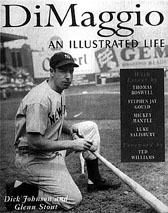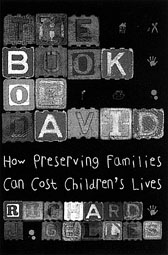Bates Bookshelf
![]()

Books by alumni and faculty will be listed in this section if bibliographical information (author, title, publisher’s name and address, date of publication, number of pages, and a brief synopsis of the book’s contents) is received. A review copy of the book is always appreciated. Send to: Editor, Bates Magazine, Bates College, 141 Nichols Street, Lewiston, Maine 04240.Briefly Noted
Bruce J. Bourque, lecturer in anthropology. Diversity and Complexity in Prehistoric Maritime Societies: A Gulf of Maine Perspective. New York: Plenum Press, 1995, 414 pages. Chosen byChoice as one of its Outstanding Academic Books for 1995, the book presents findings from two decades of excavation and research at the Turner Farm site on Penobscot Bay, and details the rich diversity of organic and cultural remains spanning 5,000 years of coastal occupation.
Mishael M. Caspi, visiting professor of religion, and Rachel S. Havrelock. Women on the Biblical Road: Ruth, Naomi, and the Female Journey. New York: University Press of America, 1996, 219 pages. In her forward, Dean of the Faculty Martha Crunkleton calls this literary analysis of the Bible’s Book of Ruth “simultaneously fanciful, solid, and provocative.”
Aviva Chomsky, assistant professor of history. West Indian Workers and the United Fruit Company in Costa Rica, 1870-1940. Baton Rouge: Louisiana State University Press, 1996, 302 pages. This superb historical review studies the banana industry on Costa Rica’s Atlantic Coast, focusing on the lives of the industry’s workers and explaining why the United Fruit Company was never able to maintain the kind of social and economic control it sought over its workers.
John R. Cole, Thomas Hedley Reynolds Professor of History.Pascal: The Man and His Two Loves. New York: New York University Press, 1995, 349 pages. In this disciplined history and incisive psychological analysis, Cole reintegrates Blaise Pascal’s “two halves” — the scientific genius of his youth and the religious conversions of his midlife.
Margaret S. Creighton, associate professor of history. Rites and Passages: The Experience of American Whaling, 1830-1870.Cambridge, England: Cambridge University Press, 1995, 233 pages. Drawing on the diaries of sailors and on ships logs, Creighton presents a compelling social history of American whaling, examining the beliefs and behaviors of men who labored at sea.
Margaret S. Creighton, associate professor of history, and Lisa Norling, editors. Iron Men, Wooden Women: Gender and Seafaring in the Atlantic World, 1700-1920. Baltimore: Johns Hopkins University Press, 1996, 293 pages. The editors explore the relationship of gender and seafaring in the Anglo-American age of sail, including models of gender behavior (“iron men” aboard ship, “stoic women” ashore) and other topics, such as the careers of female pirates. The text includes essays by Creighton and Lillian Nayder, associate professor of English.
David R. Cummiskey, associate professor of philosophy. Kantian Consequentialism. New York: Oxford University Press, 1996, 192 pages. Cummiskey offers a discussion of the compatibilities of consequentialism and Kantian ethics, often assumed to be incompatible.
Loring M. Danforth, professor of anthropology. The Macedonian Conflict. Princeton, New Jersey: Princeton University Press, 1995, 288 pages. The Macedonian conflict is examined in light of contemporary theoretical work on ethnic nationalism, the construction of national identities and cultures, the invention of tradition, and the role of the state in the process of building a nation.
George H. Drury ’61. The Reluctant Railfan’s Introduction to Europe. Milwaukee: George H. Drury, 1996, 48 pages. Bates’s ultimate railfan explains everything a U.S. train buff (or anyone wishing to travel Europe by train) needs to know about the European rail system, from how to get a Eurailpass to how to read departure timetables.
Kathy Lynn Emerson ’69. The Writer’s Guide to Everyday Life in Renaissance England. Cincinnati: Writer’s Digest Books, 1996, 280 pages. This informative guide to everyday life in England from 1485 to 1649 offers specific information (like the fact that traitors’ heads displayed on London Bridge were first parboiled and then dipped in tar to preserve them longer) as well as select bibliographies relating to the society of the time.
Roy P. Fairfield ’43. Doing it Over: Images in Reflection. Saco, Maine: Bastille Books, 1996, 70 pp. The College’s esteemed versifier offers a book of poetry “capturing the human experience by looking over the poet’s shoulder.”
Baltasar Fra-Molinero, associate professor of Spanish. La imagen de los negros en el teatro del Siglo de Oro (The Image of Blacks in the Theater of the Golden Age). Madrid: Siglo Veintiuno de Espana Editores, 1995, 222 pages. The author discusses the relationship between reality and black stereotypes in Spanish theater in the beginning of the seventeenth century — stereotypes that still exist to some degree today in Hispanic and American societies.
 Richard J. Gelles ’68. The Book of David. New York: Basic Books, 1996, 200 pages. By focusing on the events surrounding one child’s needless death, Gelles illustrates the flaws in the current child welfare system.Richard A. Johnson ’78 (editor) and Frederick Lewis. Young at Heart. Waco, Texas: WRS Publishing, 1992, 208 pages. Johnson and Lewis tell the story of famed Boston runner Johnny Kelley, who is eighty-four years old and still running, and who has answered the gun in sixty Boston Marathons.
Richard J. Gelles ’68. The Book of David. New York: Basic Books, 1996, 200 pages. By focusing on the events surrounding one child’s needless death, Gelles illustrates the flaws in the current child welfare system.Richard A. Johnson ’78 (editor) and Frederick Lewis. Young at Heart. Waco, Texas: WRS Publishing, 1992, 208 pages. Johnson and Lewis tell the story of famed Boston runner Johnny Kelley, who is eighty-four years old and still running, and who has answered the gun in sixty Boston Marathons.
Richard A. Johnson ’78 (editor) and Glenn Stout. DiMaggio: An Illustrated Life. New York: Walker and Company, 1995, 272 pages. This biography of baseball legend Joe DiMaggio comes alive with 180 photographs.
Michael E. Jones, professor of history. The End of Roman Britain.Ithaca: Cornell University Press, 1996, 323 pages. Jones presents new views on the continuing question: Why, of all the provinces long occupied by Rome, did Britain retain so slight an imprint of Roman civilization?
James M. Kacian ’74. Presents of Mind, Lake Oswego, Oregon: Katsura Press, 1996. This book of English-language haiku is modeled after classical Japanese volumes, in five seasons, including eighty-five poems with a preface considering the relationship between silence and haiku.
Mark A. Kessler, associate professor of political science, James Eisenstein, Bruce A. Williams, and Jacqueline Vaughn Switzer. The Play of Power: An Introduction to American Government. New York: St. Martin’s Press, 1996. A textbook examining power, politics, and government.
Eli C. Minkoff, professor of biology and Pamela J. Baker ’70,associate professor of biology. Biology Today: An Issues Approach.New York: McGraw-Hill, 1996, 533 pages. The authors have produced a textbook that teaches introductory biology by examining current issues familiar to students, such as HIV and AIDS.
Christine T. Papadakis ’89. A Very Peculiar Tale of a Very Peculiar Family. Athens: Thymari Publishers, 1996, 64 pages. This children’s book, written and illustrated by Papadakis, tells about a “horrible and grouchy family who fritter their lives away arguing and fighting,” until something happens that changes their lives. Written in Greek.
Karen Boutelle Sopper ’78. Amish Quilts Punch-Out Gift Boxes. Mineola, New York: Dover Publications, 1996. Sopper offers a collection of six assemble-yourself gift boxes with designs based on popular Amish quilting patterns.
Anne D. Williams, professor of economics. Cutting a Fine Figure: The Art of the Jigsaw Puzzle. Lexington: Museum of Our National Heritage, 1996. Williams, who guest-curated this show, presents the exhibition catalogue featuring her collection of puzzles, one of the world’s finest.